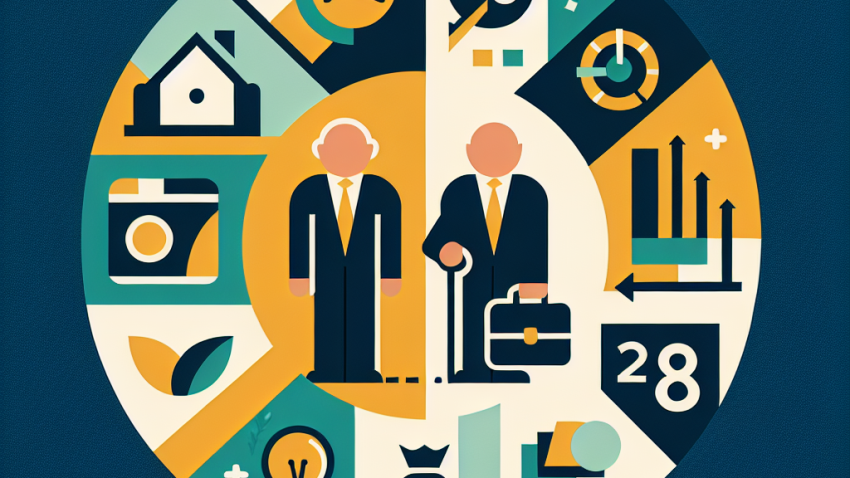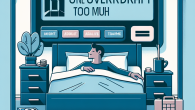
How I’m Planning for Retirement at 28 (Seriously)
How to Start Budgeting When You Have No Idea Where to Begin
Let me guess—you’ve tried to start a budget before, right? You opened a spreadsheet, maybe downloaded a fancy app, and then stared blankly at it, wondering where that $50 from last weekend went. Yeah, we’ve all been there. Budgeting isn’t exactly the sexiest word in personal finance, but trust me, it’s the foundation of everything good in your money life.
So, if you’re thinking, “I don’t even know where to begin,” congratulations—you’re in the exact right place. I’m Tom Bradley, your friendly guide to beginner finance—the guy who believes financial wellness should come with a side of dry humor and no judgment. Let’s dive into budgeting the way I wish someone had explained it to me when I opened my first credit card and thought it was free money. (Spoiler alert: it wasn’t.)
Why Budgeting Isn’t About Deprivation
First, let’s clear up a huge myth—budgeting isn’t about restricting your lifestyle or fashioning your own furniture out of cardboard boxes. It’s about **understanding** where your money goes, so you can be intentional about spending it.
A budget is like a financial GPS. It won’t stop you from taking wrong turns, but it will at least *tell* you when you’ve taken one—and help you reroute before you end up in Overdraft-ville.
What You’ll Need to Get Started
Before we dive into the juicy stuff, gather these essentials:
- All your income sources (job, side hustle, grandma’s birthday checks—everything)
- A snapshot of your monthly expenses (rent, groceries, subscriptions—yes, ALL of them)
- Your preferred tracking method (spreadsheet, app, or good old-fashioned pen & paper)
Got everything? Great. Let’s build your first budget, one step at a time.
Step 1: Know Your “Why”
This step is skipped way too often, and that’s a problem. Without a purpose, budgeting feels like a chore. Are you trying to get out of debt? Save for travel? Build an emergency fund? Stop living paycheck to paycheck?
Write it down. Put it on your fridge. Tattoo it on your arm (okay, maybe not that far). But keep it visible. Your “why” is your biggest motivator.
Step 2: Track Every Penny (Yes, Every Penny)
I once bought a “budget-friendly” coffee every workday for a month and realized I had spent more than my internet bill. It’s easy to lose track of small expenses, so start by tracking everything for one full month.
This basic tracking will give you a clear picture of:
- Your actual income (after taxes, not before)
- Your fixed costs (rent, phone bill, subscriptions)
- Your variable expenses (groceries, gas, dining out)
- “Slashable” expenses (yes, I see you, $13/month streaming platform you forgot you subscribed to)
You can use a free app like Mint, YNAB (You Need A Budget), or even a spreadsheet. It doesn’t matter what you use—as long as you use it consistently.
Step 3: Build a Zero-Based Budget
This method changed the game for me. A zero-based budget means you assign every dollar you earn to a specific job. Rent, groceries, savings, coffee—every dollar is accounted for until your income minus expenses equals zero.
It looks like this:
- Monthly Income: $3,000
- Fixed Expenses: $1,200
- Variable Expenses: $1,000
- Savings/Debt Repayment: $800
- Total = $3,000. Boom. Balanced.
Not a single dollar is left wandering around aimlessly. Every penny has a purpose. It’s practically a civic duty.
Step 4: Categorize Honestly
Give your money buckets names that make sense to you. Go beyond the basics if it helps you stay accountable. For example:
- Food & Coffee: Breakfast burritos, cappuccinos, and midnight snacks
- Impulse Buys: That 3 a.m. Amazon binge
- Fun: Concerts, bowling nights, cheesy romance novels
The key is honesty. Don’t pretend you spend $20/month on takeout if you know it’s more like $120. Your budget works best when it reflects your real life—not your imaginary minimalist alter-ego.
Step 5: Build an Emergency Fund (Seriously, Please)
Look—I don’t care how invincible you think you are; life will find a way to throw a curveball. A blown tire, a lost job, a surprise dental bill. An emergency fund gives you peace of mind and prevents your entire budget from imploding.
Start small. Aim for $500. Then work your way up to three months of expenses. Keep it in a separate savings account so you’re not tempted to “accidentally” spend it on concert tickets.
Step 6: Review & Adjust Every Month
Your first budget will probably suck. That’s okay! Think of it as a first draft. Just like that screenplay you abandoned after college, your budget needs editing—but this one might actually pay off.
Each month, take 10-15 minutes to review:
- What you planned vs. what you spent
- Where you went off track (no shame)
- What changes you need to make
This is how you build a system that actually fits your life. Spoiler: budgeting gets easier the longer you do it. And I daresay… more fun? (Okay, fun might be a stretch, but less soul-crushing.)
Step 7: Automate Where You Can
Want to level up? Automation is your budgeting sidekick. Set up automatic transfers to your savings, auto-pay for bills, and recurring reminders for subscription reviews (cancel that gym membership you haven’t used since March).
The less manual budgeting feels, the more likely you are to stick with it—because discipline works best when you don’t have to rely on willpower every single time.
Final Thoughts (and a Pep Talk)
Budgeting isn’t a punishment, it’s a plan. You don’t need to be perfect—just consistent. Start small, screw up, adjust, laugh about it, and keep going. The fact that you’re reading this means you’re already ahead of half the crowd.
Money doesn’t master you when you have a plan. And building that plan starts with one simple step: tracking where your cash goes and deciding what you want it to do next.
Trust me—future you (the one relaxing with an emergency fund and less stress) will be grateful you started today.
Need help or have questions?
Want more tips like this? Check out our About Us page to meet the team behind Financeone, or Contact Us with your burning budgeting questions.
You’ve got this.









Leave a Reply